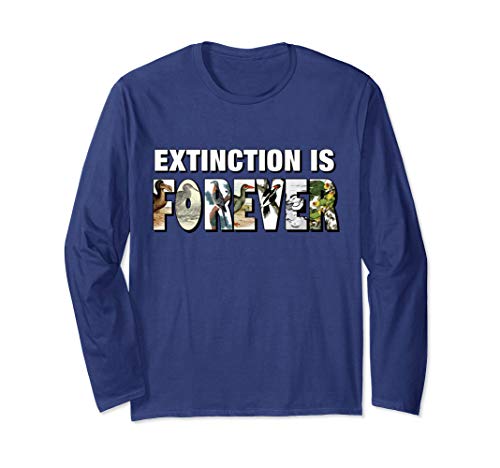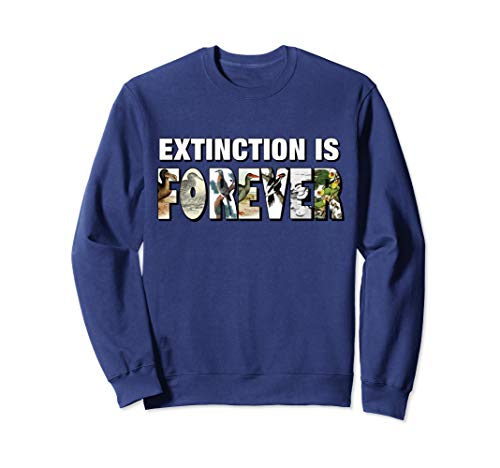Extinction Is Forever Tote Bag

Today is Earth Day. Let's remember the other beings who share our planet. We're the stewards, and we have to do better. Earth Day every day. Reduce your impact, and spread the message. Using this reusable tote bag is a great way to do both.
Spread a message of conservation in both action and words with this "Extinction is Forever" reusable grocery tote bag. The message in bold text uses the images of seven extinct species of bird within the letters of "FOREVER".
The birds featured have all be lost to extinction.
We lost the Dodo (in the letter F) in around 1662, when the last plausible sightings were recorded. Both hunting and predation by invasive species led to the demise of the Dodo on its endemic island of Mauritius.
The New Zealand Bittern (in the letter O) was lost as a species in the 1890s. Other names for this lost bird include the New Zealand Little Bittern, and Kaoriki (in the Maori language). As the name indicates, this species was native (and endemic) to New Zealand. This enigmatic species may have been lost to predation by invasive species, a continuing problem for native species of New Zealand.
The last Passenger Pigeon (in the first letter R) was a famous individual, Martha, who died in 1914. This once incredibly abundant species was hunted to extinction. The image used in this tote bag design is taken from a painting by K. Hayashi done in around 1900.
The Rodrigues Rail (in the first letter E) was endemic to the island of Rodrigues in the Indian Ocean. This species was lost to extinction due to excessive hunting, habitat loss, and predation by invasive cats. The species, also known as Leguat's Gelinote, was lost in the mid-18th century.
The last plausible sighting of an Ivory-billed Woodpecker in the United States (in the letter V) was in 1944, in Louisiana. In the early 2000s, there were some claimed sightings in Louisiana and Arkansas, leading to expeditions and further investigations, which yielded no documented observations. While the IUCN may consider the species to be "Critically Endangered", the Ivory-billed Woodpecker is widely accepted to be extinct. Habitat destruction and hunting led to its demise.
The Labrador Duck (in the second letter E) was a small species of North American sea duck that went extinct around 1878. While the cause of its extinction is not fully known, they may have been hunted for their feathers and their eggs may have been over-harvested. Their food sources may also have been impacted by the growing human population around their habitat.
Finally, the Carolina Parakeet (in the second letter R) was North America's only native species of parrot. The colorful bird, once abundant, went extinct in 1918, when the last individual, Incas, died at the Cincinnati Zoo. Loss of habitat due to deforestation and hunting for the feather trade contributed to the loss of the Carolina Parakeet.
Bring along these reminders with you in your daily life. This reusable tote can reduce your own impact on our environment and eliminate the need for single-use plastic bags. Never forget what we have lost with this powerful graphic design.

















